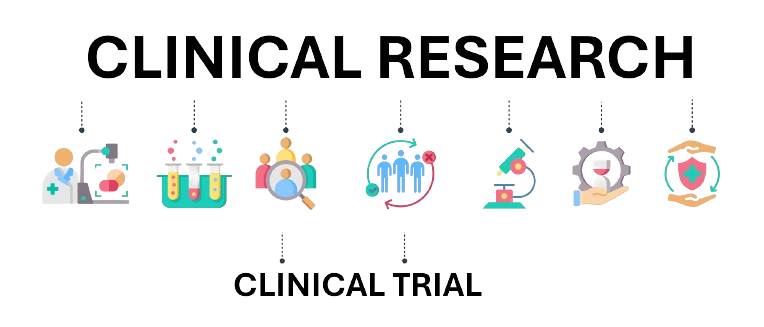


NIH defines human clinical research as research with human subjects that is:
(1) Patient-Oriented Research. Research Conducted with human subjects (or on material of human origin such as tissues, specimens, and cognitive phenomena) for which an investigator (or colleague) directly interacts with human subjects. Excluded from this definition are in vitro studies that utilize human tissues that cannot be linked to a living individual. Patient-oriented research includes:
(a) mechanisms of human disease,
(b) therapeutic interventions,
(c) clinical studies, or
(d) development of new technologies.
(2) Epidemiologic and Behavioral Studies.
(3) Outcomes Research and Health Services Research.
Note: Studies falling under Exemption 4 for human subjects research are not considered clinical research by this definition.
The NIH defines a clinical trial as a research study in which one or more human subjects are prospectively assigned to one or more interventions (which may include placebo or other control) to evaluate the effects of those interventions on health-related biomedical or behavioral outcomes.
*Reminder: Ensure compliance with clinicaltrials.gov registration requirements for applicable clinical trials